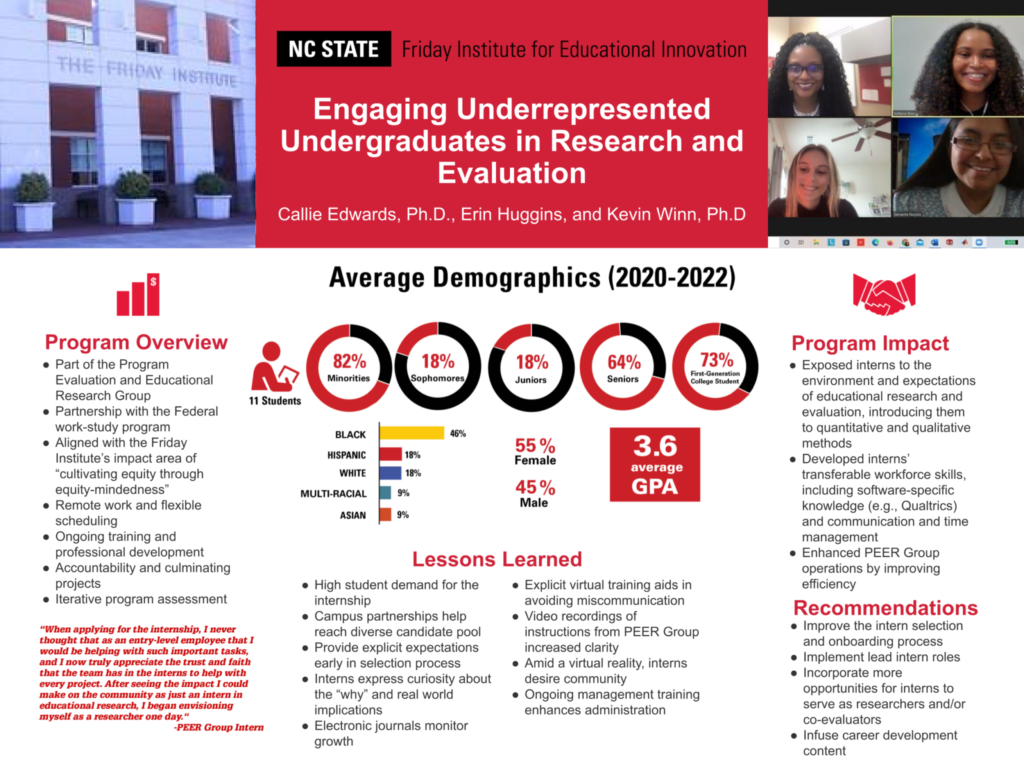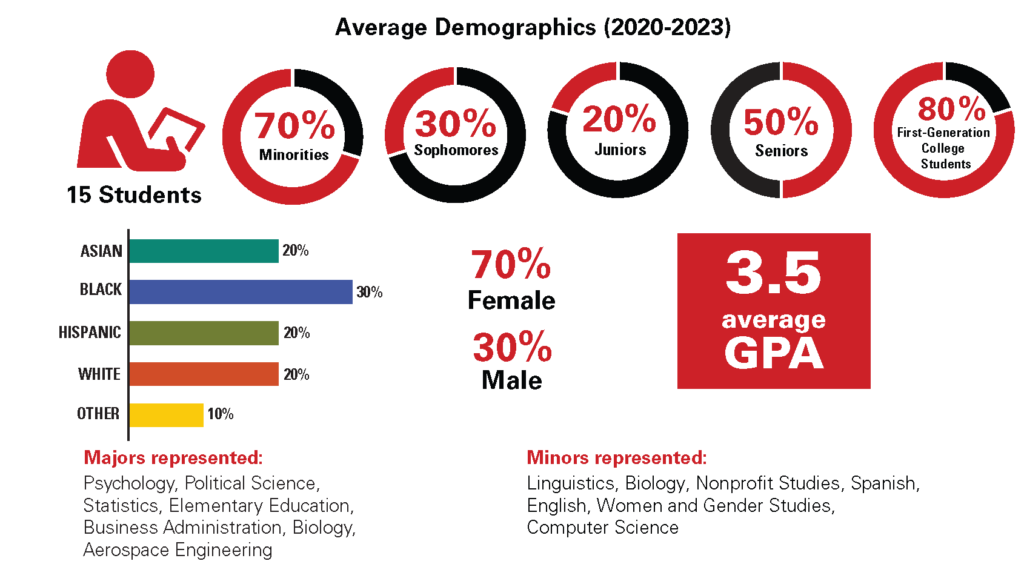About the Internship Program

Key Components
Interns are selected based on their interest in education and developing research and evaluation skills. The internship consists of the following eight key components:
- Partnership with Federal Work Study, requiring all interns to be work-study eligible
- Hybrid Work and Flexible Scheduling to accommodate for student and PEER group safety and needs during the COVID-19 pandemic
- Research and Evaluation Assignments, enabling interns to work on a variety of PEER group projects
- Ongoing Training and Development via weekly check-in/training meetings and informal mentoring
- Organizational Strategies, including Google Drive team and program administration folders and a Slack channel
- Accountability Measures, including project logs, electronic journals and performance appraisals
- Culminating Projects, including a final oral presentation to the PEER group and a final blog post for the Friday Institute website
- Iterative Program Assessment, including monthly memos, pre-mid-post inventory surveys, exit interviews and focus groups
Intern Program Goal
Create a sustainable and equity-focused pipeline for future educational researchers and program evaluators.
Intern Program Outcomes
The program has three major outcomes:
- Expose interns to the environment and exceptions of educational research and evaluation
- Develop interns’ transferable workforce skills
- Enhance PEER group operations
2020-2023 Intern Demographics
